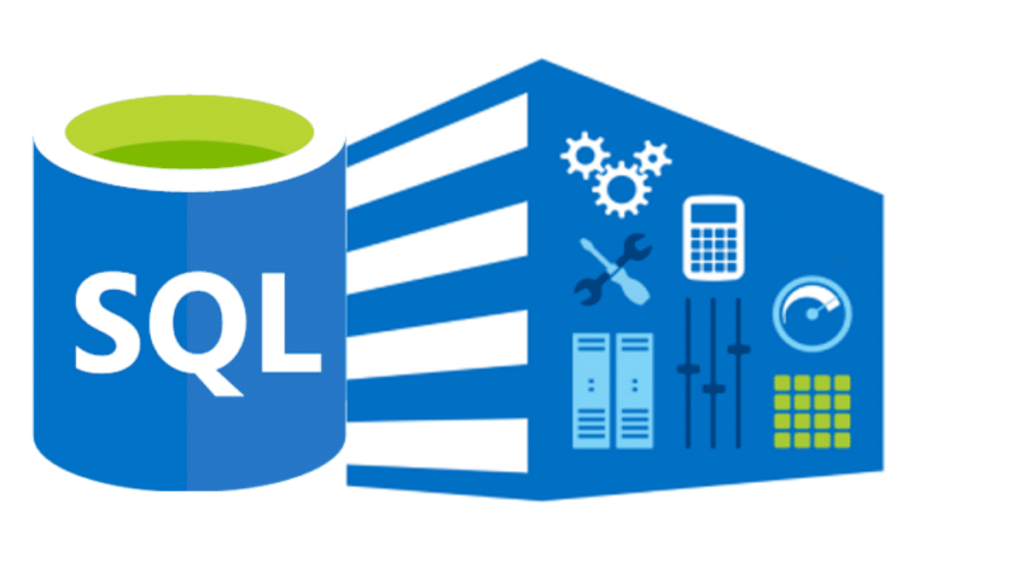FOREWORD
“We must accept human error as inevitable – and design around that fact – Donald Berwick”
It’s true, isn’t it???
Errors have always been there and are still common today. The fact remains, these are only natural, but unintended nevertheless. This was the case, especially in the early 1800’s, when the simplest of the calculations to the most complex tasks were performed manually- by people like you and me. Off course,
“Necessity is the mother of all inventions”- Plato……………..
And this necessity, which became inevitable over time, led to Charles Babbage (The father of computing) inventing the most brilliant machine – The computer. However, this amazing human invention alone did not solve the “error” factor and thus came in the computer languages in 1883, one of which is Structured Query Language (SQL) developed in the early 1970’s to change and retrieve data that is stored in IBM’s original data management system.
What makes SQL the most sorted after language is its ability to work with any database, also it’s well-suited with manipulation of data and the data stored is dynamic. So, if you are in search of a high-paying job with computer language in multi-national companies, then this article on SQL developer is for you.

Top 70 SQL Developer Interview questions and answers you must prepare in 2021 are as follows:
Q.1 As I can see, you are a qualified SQL developer, from where did you get your certification?
I got my certification from Henry Harvin’s Coding Academy – https://www.henryharvin.com/coding-academy and I did the https://www.henryharvin.com/sql-course course.
Q.2 Why did you choose to get the SQL developer certificate from Henry Harvin’s Academy?
- Henry Harvin is one of the leading career and competency development organizations that focuses primarily on value creation.
- SQL developer course is ranked as No.1 by ANSI (American National Standard Institute).
- The course offers 9 in 1 facility with 16 hours of the live online interactive session with projects ranging in various sectors, guaranteed internship with practical experience, certification using the hallmark of CSQLD next to my name, e-learning access with regular boot-camps spread over a year, free access to hack-a-thons with 1-year gold membership for certified SQL developer with 100% placement assistance for a year post successful completion.
- Not to mention about the trainers who are experienced for over a decade in the industry.
Q.3 What do you mean by Database?
As the name suggests, the database is nothing but a collection of any information arranged in an organized form to have better and faster access, storage, and manipulation.
Q.4 What do you mean by a table in SQL?
The table is nothing but a collection of data and the information of the data at a single view in an organized form.
Q.5 What do you mean by field in SQL?
A field is nothing but the number of columns in a table.
Q.6 As a SQL developer, can you give an example of a table with a field?
Yes, we can take an example of a teacher in a school and her information.
Table – Teacherinformation
Field – Teacher’s name, Joining date, Degree
Q.7 What do you mean by a data warehouse?
As the name suggests, it’s a warehouse means a central repository of data that has been collected from multiple information sources.
Q.8 As a SQL developer, do you know the different sub-sets of SQL or do you know the different commands of SQL?
There are 5 sub-sets of SQL and these are as follows –
- DML – Data Manipulation Language
- DQL – Data Query Language
- DDL – Data Definition Language
- DCL – Data Control Language
- TCL – Transaction Control Language
Q.9 What do you mean by INDEX?
An INDEX is used for speeding up the performance of the queries and faster retrieval of data from the table.
Q.10 What do you mean by JOIN in SQL?
As the name suggests, a JOIN is used in combining rows from two or more tables depending on the column that is related to them. In other words, it is used in merging two tables or to retrieve data from them.
Q.11 How many types of JOINS are there?
There are 4 types of JOINS
- INNER JOIN
- RIGHT JOIN
- LEFT JOIN
- FULL OUTER JOIN
Q.12 Can you state 1 differentiating point between an INNER JOIN and OUTER JOIN?
INNER JOIN – When there is at least some data that is matching between two tables in comparison, then the INNER JOIN returns rows.
OUTER JOIN – When the records are unmatched from one or both the tables, then the OUTER JOIN returns rows from both tables.
Q.13 How many types of indexes are there and what are they?
There are 3 types of indexes
- Clustered Index – It reorders the physical order of the table and the search is based on the key values and for every index table, there will be only one clustered table.
- Non-clustered Index – It does not change the physical order of the table and it retains a logical order of the data. Also, every table can have many non-clustered indexes.
- Unique Index – As the name suggests, it helps to retain the integrity of the data by ensuring that in a table none of the two rows have any key values that are identical.
Q.14 What do you mean by data integrity?
It means consistency with the accuracy of the information or the data in the database.
Q.15 As a SQL developer, can you tell me if there is any difference between Rename and Alias, if yes, then what is it?
Rename – It means a name that is permanent and given to a column or a table.
Alias – It means a name that is temporary and given to a column or a table.
Q.16 What do you mean by SQL Constraints?
As the name suggests, these are a set of rules for enforcing restrictions while updating the data, inserting the data, deleting the data, or doing any changes within the database.
Q.17 What do you mean by a Unique Constraint?
As the name suggests, a Unique constraint ensures that there are no duplicate values in the column or the field.
Q.18 What do you mean by a primary key?
A primary key is nothing but a column or a collection of columns that identifies each row in a table uniquely. Also, null values are not allowed in this.
Q.19 SQL developer, what can you say about query optimization?
- Query optimization is the phase that is used to identify a plan which has the least estimated cost for the evaluation query.
- With this, the output is produced at a faster rate.
- This reduces the space and time complexity.
- Also, in a very less time, a large number of queries can be executed.
Q.20 What do you mean by a Foreign key?
A Foreign key is nothing but a key that is used to link together two tables. This key is linked with a primary key of another table.
Q.21 What do you mean by a Null value?
A Null Value as the name suggests is a field with no value. A field with a null value has been left blank during the creation of the record.
Q.22 What do you mean by auto-increment in SQL?
The auto-increment is a keyword that allows the user to the creation of a unique number generation when a new record insertion is done in a table. This can be used with the Primary key.
Q.23 What is denormalization?
Denormalization is a technique that is used in accessing the data from higher to lower forms of the database. The main advantage is that it helps in increasing the performance of the infrastructure in its entirety by introducing redundancy.
Q.24 What is normalization?
Normalization is nothing but the process of organizing the required data to avoid duplicate values and also redundancy.
Q.25 As a SQL developer, can you list a few advantages of normalization?
- Accessing the data efficiently with an easy finding of data
- Easy modification of data
- Organization of data in a much more efficient way
- More number of tables with smaller rows
- Reduction of data that is duplicated and redundant
Q.26 As a SQL developer, how can you avoid having any duplicate values in a query?
There is a query called SQL SELECT DISTINCT and this query is used to return only values that are unique which means the duplicate values are eliminated in the process.
Q.27 Can multiple Foreign keys be contained in a table?
Yes, Multiple Foreign keys are contained in a table.
Q.28 As a SQL developer, can you list the different types of normalization?
Yes, there are 4 different types of normalization –
- First normal form (also known as 1NF)
- Second normal form (also known as 2NF)
- Third normal form (also known as 3NF)
- Boyce and Codd Normal form (also known as BCNF)
Q.29 What do you mean by a Trigger?
A trigger is nothing but a procedure initiating action as a response to any occurrence of an event, it can be insertion, deletion, or updation.
Q.30 Why is there a need for group functions in SQL?
Group functions work on the set of rows and help in returning one result in a group. Commonly used group functions are COUNT, AVG, MIN, MAX, VARIANCE, etc.
Q.31 Why do you feel there is a need for a MERGE statement?
MERGE statement is needed as it allows for conditional updation or data insertion in a table.
Q.32 As a SQL developer, can you tell me a few of the different types of operator sets that are available in SQL?
Few types of available operator sets are Intersect, Minus, or Union operators.
Q.33 Can you fetch alternate records from a table?
Yes, we can fetch alternate records from a table for both odd and even number rows.
Q.34 As a SQL developer, how can you select any required unique records from a table?
We can select any required unique records from a table using the DISTINCT keyword.
Q.35 What do you mean by CLAUSE?
CLAUSE in SQL is to limit the set of the result by giving a condition to the query.
Q.36 Can you list some manipulation functions in SQL?
There are 3 manipulation functions in SQL viz. UPPER, LOWER, INITCAP.
Q.37 Can you name the operator that is used for a matching pattern?
Yes, the operator used for pattern matching is the LIKE operator.
Q.38 What do you mean by a View?
A view is a virtual table consisting of a data subset in a table and it takes less space for storage.
Q.39 Can you list a few uses of Views as a SQL developer?
- Data independence is ensured
- Different views of the same data can be ensured
- Complex queries are made simple
- Access restriction of data
Q.40 What do you mean by user-defined functions?
These are the functions written by the users as per their niche requirements as per the name itself. It’s written to use logic as applicable.
Q.41 As a SQL developer, can you name the TCP/IP port for SQL server run?
By default, the TCP/IP port for the SQL server is 1433.
Q.42 Can you list the ACID properties?
Yes, there are 4 ACID properties
- Consistency
- Atomicity
- Durability
- Isolation
Q.43 What do you mean by a Stored procedure?
A stored procedure is a collection of statements of SQL which has been created and then stored in the database for a particular task.
Q.44 According to you, what are the possible values stored in a BOOLEAN data field?
The possible values are FALSE and TRUE.
Q.45 Can you list how Dynamic SQL be executed?
- Writing a query using the parameters
- Use the function EXEC.
- Use the function sp_executesql
Q.46 How can you fetch records that are common from two tables?
We can fetch records that are common using INTERSECT.
Q.47 Can you say something about Collation?
Collation is a set of rules and it helps in determining how data can be sorted along with comparison.
Q.48 Can you list the different types of Collation sensitivity?
There are 4 different types of collation sensitivity
- Accent sensitivity
- Kana sensitivity
- Case sensitivity
- Width sensitivity
Q.49 What do you mean by a subquery?
A subquery as the name suggests is a query within another query. The outer query can be called the main query while the inner query can be called the subquery. A subquery is first executed and its result is given to the main query.
Q.50 Can you give the types of subquery?
Yes, there are 2 types of subquery viz correlated and non-correlated
- Correlated subquery – It is not an independent query, however, it can refer to the column in a table listed in the FROM the list in the main query.
- Non-correlated subquery – It is an independent query, and the output is substituted in the main query.
Q.51 Can you state 1 difference between a WHERE clause and a HAVING clause?
WHERE clause is applied to every row before they are part of the GROUP by function in a query while HAVING clause is used with the GROUP by function.
Q.52 What do you mean by DBMS?
The full form of DBMS is Database Management System and it is a collection of programs that enables any user to store, update, delete or retrieve data from a database.
Q.53 Can you list the types of DBMS?
There are 2 types of DBMS
- Relational Database Management System (RDBMS)
- Non-Relational Database Management System
Q.54 What do you mean by recursive stored procedure?
Recursive stored procedure calls itself till it reaches some boundary condition. This helps the programmers to use the same set of code any number of times.
Q.55 As a SQL developer, can you give a difference between TRUNCATE and DROP statements?
TRUNCATE – The operation cannot be rolled back and it removes all the rows from the table.
DROP – The operation cannot be rolled back and it removes a table from the database.
Q.56 Can you give a difference between Union and Union All Command?
Union – Unions helps in omitting the duplicate records and give the only result that is a distinct set of two or more statements.
Union All-Union All returns all the rows which include duplicates in the result that is different select statements.
Q.57 What is the use of SQL delete statements?
As the name suggests, the SQL delete statement is used in deleting the records from a table.
Q.58 As a SQL developer, can you give the order of SQL selected?
Yes, the order of SQL selection is as follows –
SELECT – FROM – WHERE – GROUP BY – HAVING – ORDER BY.
Q.59 What do you mean by SQL CASE statement?
SQL CASE statement allows an embedding and if-else-like clause in the SELECT statement.
Q.60 What do you mean by Online Transaction Processing (OLTP)?
OLTP helps in data management simply and efficiently. It manages transaction-based applications used for data entry, processing, and retrieval. OLTP serves real-time transactions.
Q.61 What do you mean by Global and Local variables?
Global variables – These are the variables that can be accessed throughout the entire program and cannot be created by any other function.
Local variables – These are the variables that can be used inside the function and are not used by any other function.
Q.62 What do you mean by a Cursor?
This is a control enabling traversal over the rows or records in a table. It helps in addition, deletion, and retrieval of database records.
Q.63 With what function can you write a SQL query to display the current date?
There is a built-in function called GetDate() to display the current timestamp and date.
Q.64 Can you give the difference between CHAR and VARCHAR2 databases?
CHAR is used for fixed-length strings. VARCHAR2 is used for character strings of various lengths, however, both are used for character datatype.
Q.65 Can you give the main difference between IN and BETWEEN condition operations?
IN – This is used to check the values that are contained in a specific set of values.
BETWEEN – Is used to display rows based on value ranges in a row.
Q.66 What are the various levels of Constraints?
There are 2 levels of a Constraint
- Table level constraint
- Column level constraint
Q.67 State one advantage and disadvantage each of stored procedure?
- Advantage – The stored procedure is used as modular programming for creation once, storing and calling several times, helps in faster execution, and reduces the traffic network with better security to the data.
- Disadvantage – Database server memory is utilized more and it can be executed only in the said database.
Q.68 How to test for NULL values?
A NULL value cannot be compared with other NULL values as it is a field with no value. Hence, it is not possible to test NULL values. Only IS NULL and IS NOT NULL operations can be used.
Q.69 Can you list all the types of user-defined functions?
There are 3 types of user-defined functions
- Multi-statement valued functions
- Scalar functions
- Inline table-valued functions
Q.70 What do you mean by testing the database?
It’s also called data testing or back-end testing. Testing involves verifying the data integrity with the present data in the back-end. It also involves updating the records with verification from the front-end.
CONCLUSION
I hope I have been able to cover the most lingering questions in your mind related to the SQL developer job as a fresher and as well as if you needed a little brush up on the subject. Your niche interest in this technical subject will make the subject interesting for you as well as guide you in getting a SQL developer job. The market is ever-growing so is the demand for SQL developers. Go for it and make the most of the opportunity that is there in front of you and one can only conclude that sky is the limit for success.
FAQs
Few skills for the SQL developer job would be as follows :-
-Creating an efficiently working structured database
-Ability to write the required queries, views, and applications
-Maintain the high-level data quality and integrity
-Have a thorough understanding of performance issues if any
In the current scenario, yes, the SQL developer job is the most in-demand job in the industry. Also, more than 50% of data analyst jobs are SQL-based, so without any benefit of the doubt, it’s a high in-demand job.
As per the latest statistics, some of the world’s biggest companies like Facebook, Uber, etc are using MySQL, so this can be considered as in-demand presently among the SQL developer jobs.
This entirely depends on the organization from where the certification is being done. Some institutes offer courses ranging of few weeks as less as even 3 weeks while some offer of few months extending up to 12 months. Most important thing is to select a course that has good recognition and is widely acclaimed in the industry to get a well-deserved SQL developer job.
This depends completely on the experience, the number of projects handled, and the company. However, as per the statistics, salary in India would range from 3 lakhs per annum to up to 11 lakhs per annum depending on the various scenarios.






Recent Comments